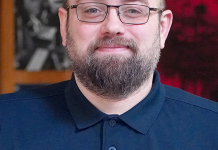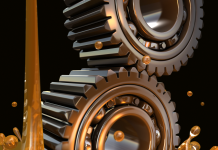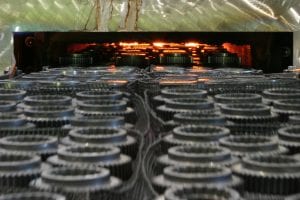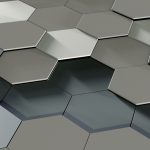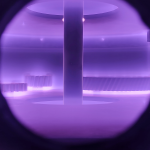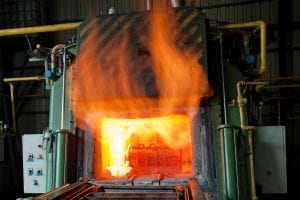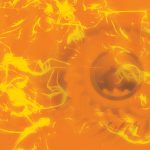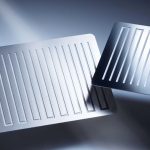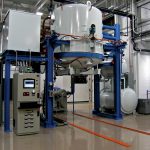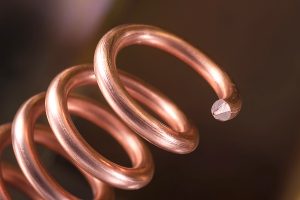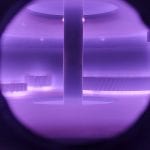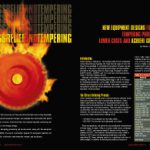Sporting its new tagline — Enabling a Clean, Efficient & Electrified Future — the highly regarded Ceramics Expo will once again head for Cleveland’s I-X Center (September 22–23) for its sixth annual technology showcase. The organizer, Smarter Shows (Tarsus) Ltd., has confirmed that this is a virtually sold-out event, and it’s now expected that more than 300 manufacturers and system providers from 25 countries across the world will come together to deliver a dynamic technology presentation and establish the ideal platform for a wide-ranging forum.
Fuel-efficient and consistent drying, curing, firing, and sintering are central to smooth operation and enhanced performance in the various parts of the ceramics, glass, and allied-products industry, and therefore it’s no surprise to see these elements sitting front-and-center of North America’s largest free-to-attend event for this community. Pre-registrations are at an encouraging level, and more than 3,000 visitors are expected to make the trip to the CLE come May.
“This is a high-temperature industry, and inevitably, there is closely focused attention on dependable, efficient, and safe thermal processing, as well as advanced combustion monitoring and control,” said Exhibition Director Danny Scott. “We are proud to note that many of the leading international exponents in this critical area of our sector — alongside those organizations responsible for materials innovation — will be represented on the exhibit floor, with the scope and size outstripping anything we’ve seen previously.”
The shorter two-day format with pre-show networking, introduced to overwhelmingly positive reaction last year, is repeated. Also featured once again is the dedicated 1,200-square-foot space within the exhibit area for staging the B2B Meetings initiative, a concept that draws together interested parties for discussions that lead to well defined and mutually beneficial actions. Brand new for 2020 is the Ceramics Expo Start-Up and Academia Pavilion, scheduled to present about 30 exciting organizations, and a feature that Scott describes as “the ideal forum at which to maximize all the exciting opportunities for furthering discussion and cross-fertilization and for widening perspective.”
With all the various facets of this event in place — many tried and tested plus those enjoying their first run-out — a bustling atmosphere can be expected to be generated by visitors traveling from about 40 countries. For all those with an interest in, or pushing advancement of, industrial heat work then Ceramics Expo is a show not to be missed. Exhibitor offerings include:
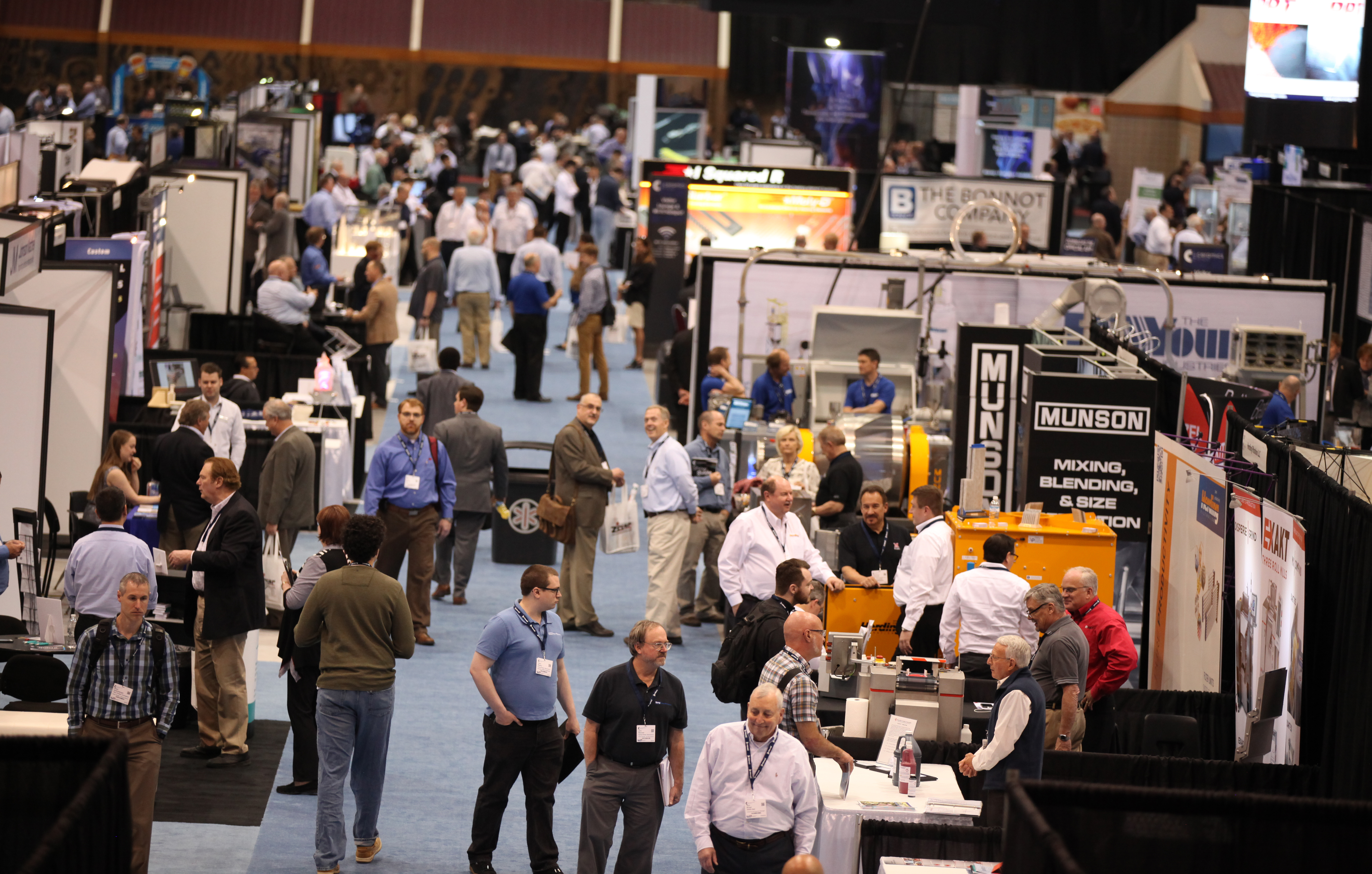
Fired Up
Innovative, flexible, and volume-capable kilns and furnaces sit at the heart of ceramic manufacturing facilities, and the leading innovators will participate in Ceramics Expo 2020.
Renowned U.S. company Harper International will be in Cleveland. Harper tailors its batch and continuous systems to each application, making the company ideal for processing in controlled and specialty atmospheric environments and at temperatures from 300°C to 3,000°C (570°F to 5,430°F). The company boasts extensive experience in designing for the production of silicon nitride, tungsten carbide, boron nitride, and aluminas in gas, electric, and microwave heating. Additionally, Harper kilns are widely used to calcine powders and sinter components such as thermistors, varistors, and monolithic and multi-layer capacitors. It also has interesting technologies available for silicon carbide (SiC) fiber processing and carbon fibers.
Also from the U.S., visitors will meet with Swindell Dressler, whose customers include the structural clay, whitewares, technical ceramics, and carbon graphite industries and whose roots go back more than 100 years, as well as the team from Thermaltek, the designer and manufacturer of custom high-temperature kilns and metallic resistance heating elements for a broad spectrum of industrial applications, including technical ceramics, electronics, fuel cells, optical fibers, calcining, glass, crystal growing, and non-ferrous metal melting and holding.
Backed up by more than 80 years’ experience, WISTRA (on the Cerinnov Group booth) is another globally recognized name in the business of thermal engineering design for technical and advanced ceramics. It produces everything from tempering units operating at just 350°C (660°F) right up to specialty kilns required to fire to 2,000°C (3,630°F). A whole host of products are manufactured in WISTRA systems, including structural and electronic ceramics, multi-layer ceramics, catalysts, filters, compacts, ceramic-metal composites, bioprostheses, abrasives, beads, and high-purity aluminas and zirconias. Kilns can also be designed for insulator firing.
Returning to Ceramics Expo is the Mexican kiln, furnace and oven constructor Nutec Bickley. Depending on the specific application, it offers shuttle, elevator, Carbell®, or tunnel kilns for firing an array of technical ceramics. A recent success in this area has been the commissioning of a special, high-temperature (1,700°C/3,100°F) tunnel kiln for a producer of technical ceramics in the U.S. Top-level performance is reported.
In the more traditional sector of the ceramic industry, Nutec Bickley has also been putting the finishing touches to its latest shuttle kiln for one of the world’s largest sanitaryware manufacturers. With an operational temperature of about 1,205°C (2,200°F), this kiln is a nine-car, three-deck model with a setting height of 2.2 meters (7.2 feet). With this design, the total weight of kiln furniture is reduced by 20 percent as compared with more traditional set-ups, and the fuel usage can be significantly reduced. Further, the kiln is fitted with the company’s Jointless® insulation modules, which can withstand temperatures up to 1,350ºC (2,460°F), providing for minimal maintenance, improved fuel economy and extended service life. This is a one-piece system that eliminates the joints between modules and also the spaces typically in the exhaust ports. It doesn’t need to be covered with cordierite, which reduces fuel consumption.
Visitors will also be able to catch up with news from the kiln and furnace subsidiaries of some leading international ceramic equipment suppliers, such as Germany’s Riedhammer (on the Laeis booth, part of the $1.6 billion SACMI Group). One of the global sanitaryware groups recently chose Riedhammer to design and build a new kiln for a Russian facility, investing to double the current shuttle kiln capacity for the fire/re-fire of glazed pieces. The kiln comprises five cars, has a total effective volume of 50 cubic meters (1,765 cubic feet) and allows the manufacturer to load pieces on two or three levels, depending on the items.
Strong Support
Of course, all the above-mentioned systems rely on excellent kiln furniture refractories in order to function properly. IPS Ceramics USA came up with several new approaches recently. In one case, it developed adjustable systems based on recrystallized silicon carbide (ReSiC) toothed support posts and slide-in batts. ReSiC has very low levels of high temperature creep, meaning the posts remain straight after many firings. Already supplied in lengths of nearly two meters, they have seen prolonged service at temperatures of up to 1,600°C (2,910°F) without any distortion or breakage. The post design can be optimized so the spacing of the teeth matches the customer’s specific product line.
IPS has also introduced a grade of cordierite suitable for injection molding. This allows a wide variety of complex shapes to be produced, with features such as through holes, slots, and fine surface detail. A good example is support blocks for plate heaters, which require a complex zig-zag slot arrangement to retain the wire element. Good market penetration and increasing growth saw the company relocate in February from Cornelius to Huntersville, North Carolina, a move designed to provide the facilities required to increase the company’s scope of operations and offer a more efficient customer service across North America.
Another exhibitor offering a wide range of primary and secondary kiln furniture is SELEE Advanced Ceramics, incorporating Engineered Ceramics® solutions and custom-designed systems using its Micromass®, Tylar®, and HYcor® product lines to meet virtually every firing need. There are tiles, saggers, setters, hearth plates, burner blocks, and element holders in materials including alumina, clay bonded silicon carbide, fused silica, mullite, and other specialty formulations.
For a number of highly specialized applications, the Korean company YJC has been working on a number of novel solutions. One of these is a multi-hole ceramic setter featuring 0.45 mm diameter perforations and delivering superior debinding and thermal conduction of the fired object. Another is a YJC box sagger whose main use is heat treatment of ceramic chips and powders such as MLCC. These saggers can be coated with YSZ (yttria-stabilized zirconia) or CSZ (ceria-stabilized zirconia), depending on requirements, and are optimized to perform where thermal shock conditions are found in the firing process. Meeting the needs of new industry demands, YJC has now developed a box sagger used for the high-temperature reaction and synthesis of lithium and metal oxides in the production of positive electrode materials, for instance in lithium ion secondary battery production.
More specialisms to investigate, particularly aimed at the technical ceramics industry, can be found at the Sunrock Ceramics booth. Sunrock’s HPA family of high alumina materials ranges from 85-percent alumina to 99.7-percent alumina with porosity of 15 percent to 18 percent to enhance thermal-shock resistance. Additionally, the company produces the HPA-CG material designed specifically for pusher plates used on pusher furnaces. Sunrock also offers an insulating 99.7-percent alumina material called B-99, used primarily in furnace linings for reducing atmosphere applications. Where required, the company has very flexible processes for economically and rapidly making new custom shapes, either from pressing or by thixotropic casting.
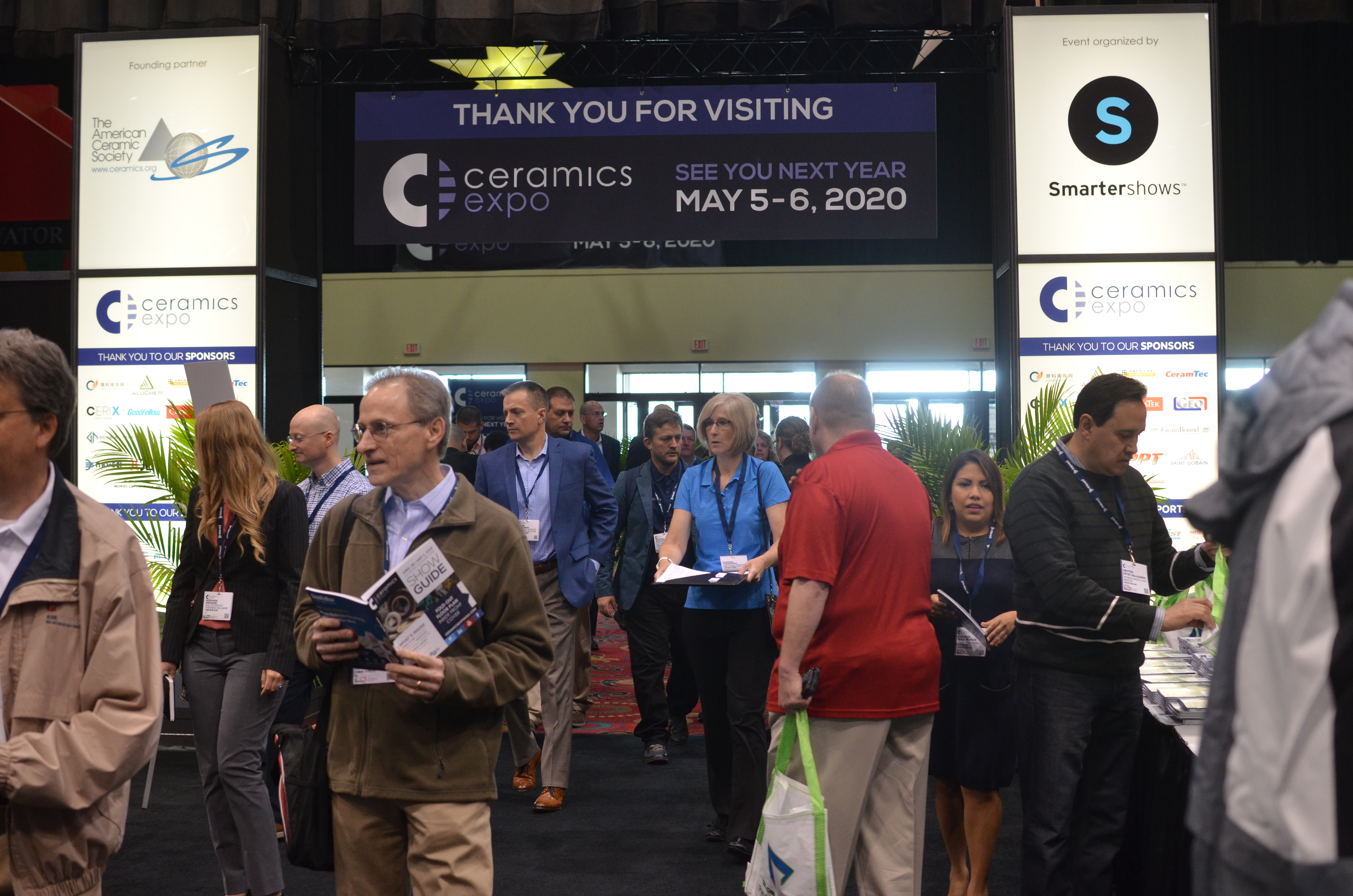
When The Pressure’s On
Advanced thermal processing, particularly in the field of technical ceramics, will often involve the simultaneous application of heat and pressure to achieve densification at elevated temperatures of a ceramic powder compact with the aim of the bonding process being to achieve production of a polycrystalline body. The sintering conditions allow for various mechanisms of atom movement to occur, such as viscous flow, liquid phase solution-precipitation, surface diffusion, bulk diffusion, and evaporation-condensation. This can be applied to bodies formed of oxides, nitrides, borides, and carbides, but also comes into play for some cermets, ferrites, abrasives, ceramic composites, and nanoceramics.
Ceramics Expo exhibitor Thermal Technology has decades of experience in specialized thermal processing and its hot press furnace systems employ state-of-the-art hydraulics for extremely high precision force and/or position control. Automatic operation is conducted by PLC-based control using a touch screen HMI. Automatic hydraulic safety systems limit force application while the furnace chamber is open in order to mitigate die breakage and operator injury. Standard sizes are available up to 2,000kN with a maximum pressing temperature of 2,500°C (4,530°F). Larger, custom-built units can be produced for specific applications. Thermal Technology also manufactures spark plasma sintering systems.
American Isostatic Press (AIP) is also active in the field and offers furnace designs with temperatures ranging from 1,200°C to 2,200°C (2,190°F to 3,990°F), typically made from Kanthal, molybdenum, tungsten, and graphite. Special oxygen-capable furnaces are available in platinum and molybdenum disilicide types. Furnaces for pressure impregnation and carbon-carbon production are offered for reactive gas containment. Both top and bottom loading furnaces are available, as are special automated loading systems.
New for lab conditions is the recently launched lab sized Series 45 top loading furnace for ultra-high temperature research and development work from Centorr Vacuum Industries. Capable of achieving 3,200ºC (5,790°F) in an inert gas atmosphere, the hot zone size of 6 inches (150 mm) in diameter by 9 inches (230mm) tall is ideal for heat treatment of ceramics, graphite and carbon composites, process development, and lab studies. The furnace features solid graphite panel elements designed for long service life within a cylindrical hot zone of rigid graphite insulation to provide long-term service even in the presence of process off-gassing.
There’s also plenty of pedigree on show by AVS Inc, with more than 1,000 installed systems worldwide for sintering, hot pressing, HIP and CVD/CVI process routes spanning aerospace, defense, and additive manufacturing. With fabrication capabilities ranging in size from 4 inches (100mm) in diameter mini furnaces, to hot zones in excess of 15 feet (4.6 meters), AVS can fabricate graphite, ceramic, or refractory metal hot zones in-house. This can be for applications involving a combination of high temperatures, up to 3,000°C (5,430°F), high vacuum down to 10-6 Torr, gas pressures up to 3,000 psig (200 bar), and even hot pressing that ranges from five tons to more than 2,000 tons of hydraulic force.
The other side of the densification coin encompasses the possibility of reduced temperature input. Anyone interested in this should get to the California Nanotechnologies (Cal Nano) booth. The company has been collaborating with Idaho National Laboratory and talked in detail about a novel sintering process in a recent article (Materials Today Communications, December 2019), co-authored by Cal Nano’s CEO, Eric Eyerman. The work concerns the “densification of graphite under high pressure and moderate temperature,” and it’s been demonstrated that graphite can be sintered at lower temperatures than previously thought possible. The technical and potential economic benefits shown by this effort can lead to lowering the cost of producing graphite components to meet current and future technical challenges.
Another benefit that can be brought into the equation is reduced cycle times, something addressed by German exhibitor Dr Fritsch and its FAST/SPS sinter presses. During FAST/SPS-sintering, current flows directly through the sintering mold and even through the sinter material if it is electrically conductive. The electrical resistance of the mold and the sinter material leads to rapid heating. This is also referred to as Joule’s Heating. Temperature is consequently generated only where it is needed. The sinter cycles are very short since the atmosphere in the sinter chamber does not need to be heated up. The short cycles result in reduced grain growth, higher densities, and better microstructure of the materials. Since grain growth is reduced to a minimum, nanomaterials stay nano after sintering.
Supermaterials Aid Excellence
While all the central equipment needs to be optimized, we can’t ignore the contribution of newly formulated, high-performance materials. One such comes from CFOAM LLC. CFOAM® carbon foam is a macroporous carbon with foam-like structure, providing the advantages common to other foam-like insulation materials. However, unlike other insulating foam materials, CFOAM® can be used at very high temperatures, up to at least 3,000ºC (5,430°F). It demonstrates high thermal shock resistance and dimensional stability over temperature. CFOAM just announced a distribution partnership with Composites One, a leading North American supplier of composite materials — the latter company will stock CFOAM in its network warehouses in the USA and Canada.
Also new to the scene is Covaron, an early stage, fast-growing, and award-winning advanced materials company. It’s an R&D company that specializes in materials technology to control inorganic polymers, forming ceramic-matrix composites, ceramic-organic composites, and ceramic-fiber composites. Covaron has several new ceramic coating products, among them its ceramic-like thermal barrier coatings that combine the formulation and process versatility of polymer coating.
Formulating thermal materials that will serve advanced industries in their future endeavors is crucial, and Ceramics Expo remains a prime platform. The 2020 show will include Naieel Co, for instance, an expert in boron nitride nanotubes (BNNT) and their manufacture and exploitation. BNNT presents similar thermal conducting and mechanical properties to carbon nanotubes, while its thermal/chemical stabilities, biocompatibility, electric insulating, and thermal neutron absorbing properties are much higher. Due to these superior properties, BNNT is under exploration in many areas of IT, space/nuclear, bio-medical, and energy.
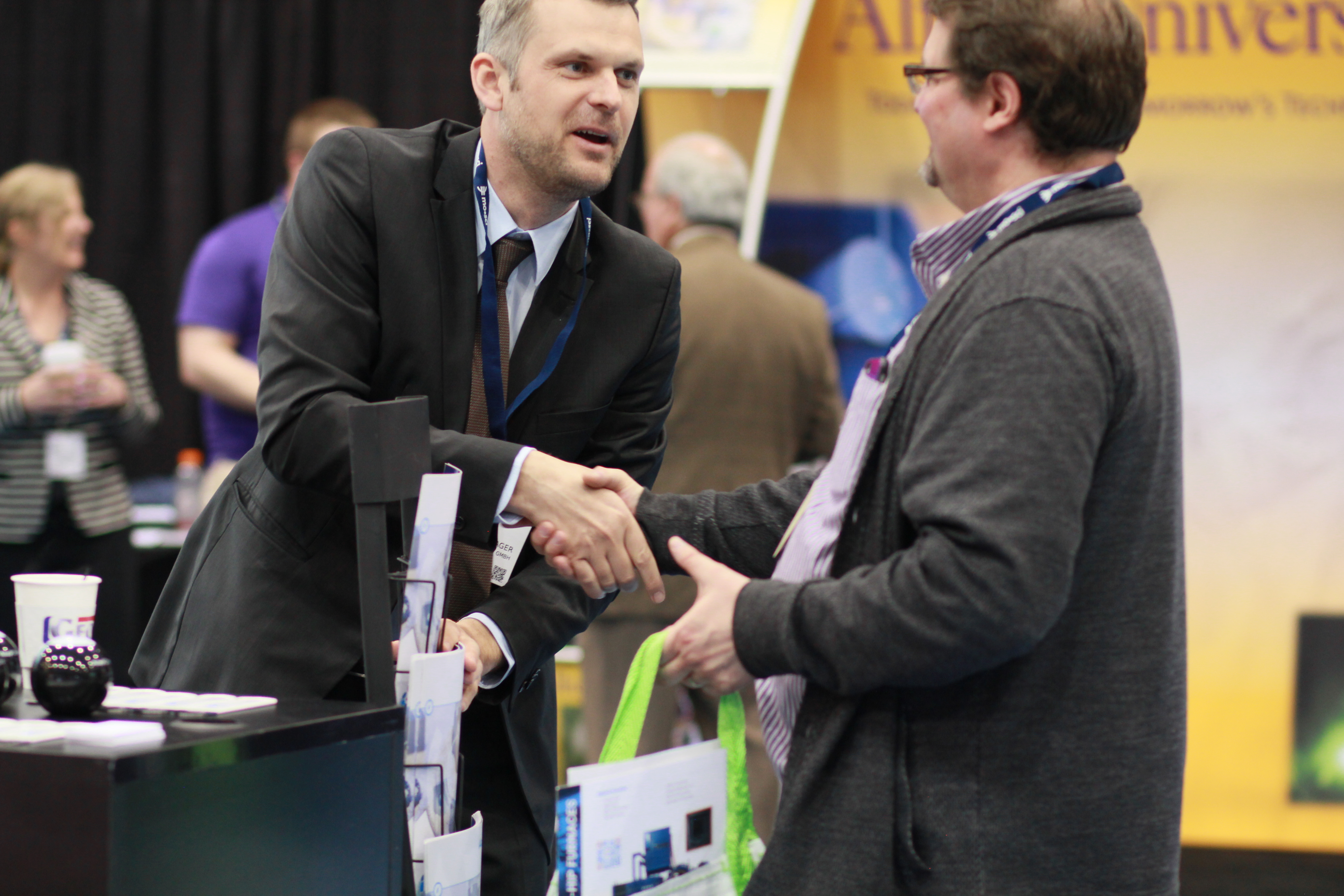
Compelling Conference
In addition to the many exhibits in Cleveland, the experience is substantially uplifted by the Ceramics Expo 2020 Conference — all elements of which are free-to-attend, just like the expo. Attending the sessions is easy as the conference forum areas sit alongside the exhibit floor on the same level. These include:
Solving Thermal Management Challenges for Electronic Packaging and Assembly Applications Using Advanced Ceramic Materials (panel, Day 1, Track 1, 10:45 a.m.). Many electronics manufacturers are unaware of the benefits that ceramics can bring. This session will explain the advantages of using ceramic materials; end users and manufacturers cannot afford to miss this disruptive growth area. For the supply chain, this session will also explore how to maximize their usage of ceramics in electronic circuitry. It will also allow electronic packaging manufacturers who are already using ceramics in their products to outline the benefits for those who have not yet begun integration.
Strides Forward in Machining and Process Improvement (Day 1, Track 2, 1 p.m.). This Innovation Spotlight is an opportunity for ceramic manufacturers and raw material suppliers to learn about improvements in the field of machining and processing. There is always room for innovation and for implementing new and exciting manufacturing methods. This can save time, cost, and improve efficiency. Whether it is machining, sintering, debinding, etc., this is the session to find out what the competition is up to. With three expert speakers presenting on their cutting-edge findings, this session will cover improvements to processing and sintering, the cost efficiency of ceramic production methods, and the benefits of these changes to the end product.
Ironing out the Wrinkles: Addressing the Challenges of Integrating Ceramic Matrix Composites (Day 2, Track 1, 1 p.m.). The last five years have seen the growing use of ceramic matrix composites (CMCs) in industry. The benefits of these hybrid materials over sometimes inferior metal counterparts have undeniable benefits when it comes to thermal management, strength and efficiency. Yet, there are still many challenges to be resolved before they can be applied in a number of areas. We are already seeing CMCs being used in the aerospace industry, and they are expanding to energy harvesting applications also. This session will explore the challenges of CMC manufacturing and explore some of the latest applications for these unique materials.
DETAILS Ceramics Expo is scheduled for September 22-23 in Cleveland, Ohio. Register online for free at: ceramicsexpousa.com


